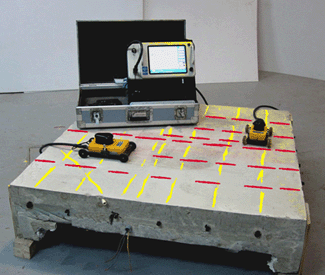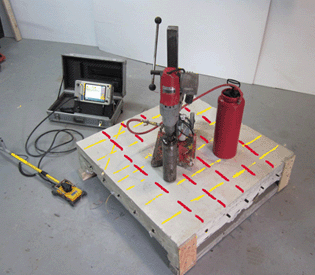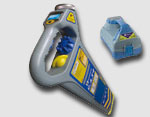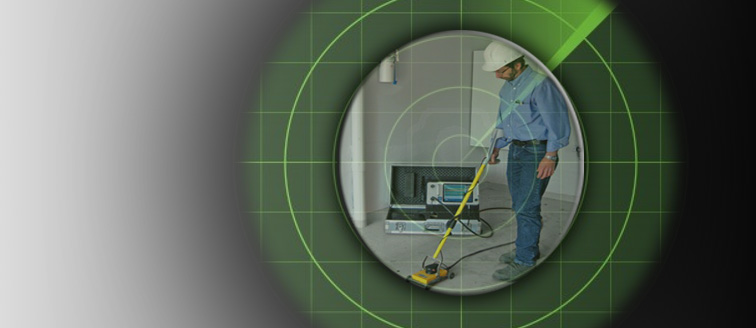

|
|

Ground Penetrating Radar (GPR) is a non destructive technique that allows us to detect, locate and see internal characteristics of structures, providing us valuable informations. This technology allows us not only to detect rebar, but also conducts for liquids or electrical cables. In some cases, we can even detect the depth of those targets and the thickness of the concrete structure. The GPR works by emitting an electromagnetic signal into a concrete structure, which is then reflected according to the dielectric property of the material contained in it. The system, composed of an emitting and receiving antenna, sends and collects signals, which are then analysed. An image representing a cross-cut of the concrete structure is then produced. The GPR enables us to identify embedded elements such as rebar, conducts, post tension cables, voids and many others.  The applications of GPR for both civil and building engineering are numerous. They include, but are not limited to : - locating rebar with precision to prevent cutting it before boring, which would adversely affect the strength of a concrete structure; - locating conducts before damaging them by sawing, drilling or any type of boring; - detecting the real location of rebar with a view to establish the effective strength of a concrete slab or wall. Concrete investigation with GPR is a unique diagnostic tool useful in preventing problems when it is used at the right moment, such as during the planning process or before any kind of demolition work such as sawing, drilling or boring in concrete structures. |
 |
|
APPLICATION |
|
This technology is based on emission, transmission and reflection of electromagnetic signals in concrete.
The depth of the investigation and dimension of the targets may vary according to wavelength and dielectric property of the material. The usual procedure consists of moving the antenna along a virtual line on a concrete surface. The result obtained is a graphic image representing a cross-cut view of the structure as if it had been sliced under the line. The embedded items that do not have the same dielectric properties of concrete will give us a contrasting image. In light of the images obtained and the knowledge of the investigated structures, it is possible to identify whether the embedded items are rebar, tension cables, electrical conducts or more. GEROPLEX INC. specializes in concrete investigation. Two specific antennas are used with the MALA CX-11: - the 1,6 GHz antenna allows to investigate up to 18 inches deep in concrete. It can also detect electromagnetic fields that come from electrical cables under tension, which gives a more elaborate diagnostic. - the latest acquisition of GEROPLEX is the 2,3 GHz antenna. It allows more precise pinpointing and dimension reading of conduits and rebar. This antenna is essential with the presence of wire-mesh in concrete. Combined with the bidirectional analysis, these antennas allow to obtain a 98 % efficiency. |
 |
|
OTHER TECHNOLOGIES |

GEROPLEX INC also owns other tools for the localization of underground pipes and cables, using the technology of radiodetection. Therefore, the combination of these different technologies becomes an asset ! |

